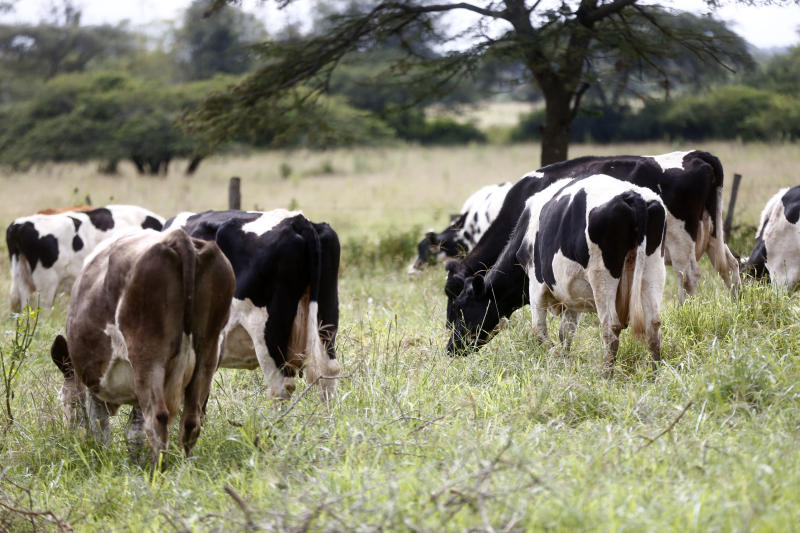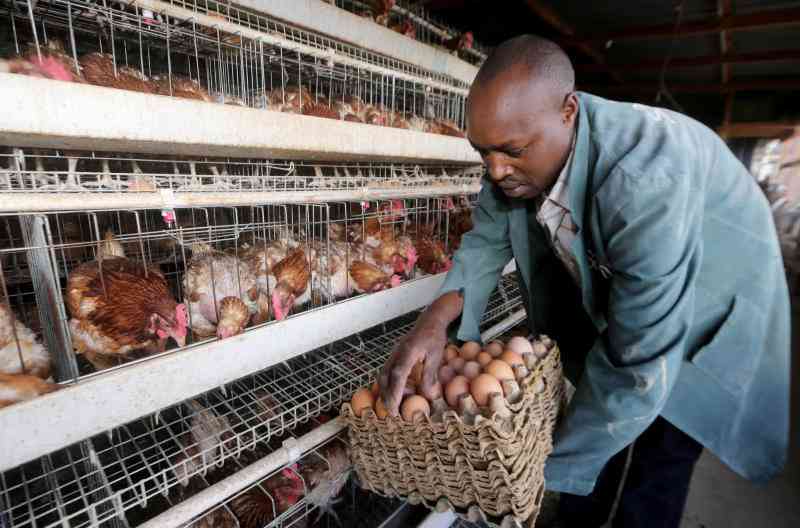
While travelling from my rural home back to the city after the December festivities, I noted something interesting. I spotted a number of exotic dairy cows and their crosses tethered along the roadside. This is a risky affair. I am sure their owners have no idea the risks they were exposing their valued animals to.
As you drive on highways as you head upcountry, it is common to see farmers tethering their animals by the road side and in livestock markets. Those who cannot take their animals to these sites go a step further to harvest the grass and take it home. The practice is common during rainy seasons when the grass thickens and looks appetising. It is equally common during the dry seasons when pasture is in short supply.
Many breeders assume this is “free” pasture. Some farmers even go a step further and let their sheep, goats and cows to loiter in markets just like street children in search of food. By allowing their animals to roam all over the place, some assume they are cutting down production costs at least on face value. But the truth is that the disadvantages outweigh the advantages.
Source of Diseases and Disease Vectors
In most countries and in some counties in Kenya roadside grazing and grazing in livestock markets is illegal. Road sides may have rich grass which is alluring on the surface but full of disease causing germs and pests. Road sides and livestock markets have a common denominator in the number and variety of animals they hold. These animals come with ticks on the skin, worms and disease causing micro-organisms in their bodies. All these organisms and pests can be potentially shed while walking on the roadside or stationed in livestock markets.
Diseases in human beings and animals often follow the same course. However, when it comes to animals, many farmers do think twice before exposing their livestock to contaminated pastures. It is the same principle that is followed in hospital; avoid nosocomial (hospital acquired infections) by limiting access to certain areas considered highly contaminated.
Road side grass and livestock market grass is full of ticks because the area is frequented by animals being walked to the market. They are also full of worms at various stages and other disease causing organisms.
As a biological measure of disease prevention, your veterinary doctor will advise that you quarantine any animal bought from such markets with the intention of observing and treating for any disease before mixing with the other flock. In fact such markets are not the best for those acquiring foundation stock. It is especially so if it is an exotic breed or its crosses which are prone to diseases carried by the indigenous breeds.
Alluring grass
Harvesting grass from the roadside or from livestock markets to feed zero grazed animals is not any different from walking the cows there. Through such practice you may easily carry the pests and disease causing micro-organisms into your farm and later use even more money in treating the animal.
I once attended to a farmer who practised zero grazing and actually spraying his cows twice a week but he couldn’t figure out where ticks were coming from. After a lengthy discussion I discovered he regularly sourced his grass from the roadside. He actually had people who harvested the grass and delivered it to his farm at a fee. When he stopped this, the tick infestation drastically went down.
Apart from diseases, tethering or grazing animals on the roadside exposes them to a higher risk of injuries and even malice not to mention the polluted air that they are exposed to.
[The writer was the vet of the year in 2016 and works with the Kenya Tsetse and Trypanosomiasis Eradication Council (KENTTEC). – [email protected]]
Want to get latest farming tips and videos?
Join Us
 The Standard Group Plc is a multi-media organization
with investments in media platforms spanning newspaper print operations,
television, radio broadcasting, digital and online services. The Standard Group
is recognized as a leading multi-media house in Kenya with a key influence in
matters of national and international interest.
The Standard Group Plc is a multi-media organization
with investments in media platforms spanning newspaper print operations,
television, radio broadcasting, digital and online services. The Standard Group
is recognized as a leading multi-media house in Kenya with a key influence in
matters of national and international interest.
 The Standard Group Plc is a multi-media organization
with investments in media platforms spanning newspaper print operations,
television, radio broadcasting, digital and online services. The Standard Group
is recognized as a leading multi-media house in Kenya with a key influence in
matters of national and international interest.
The Standard Group Plc is a multi-media organization
with investments in media platforms spanning newspaper print operations,
television, radio broadcasting, digital and online services. The Standard Group
is recognized as a leading multi-media house in Kenya with a key influence in
matters of national and international interest.








